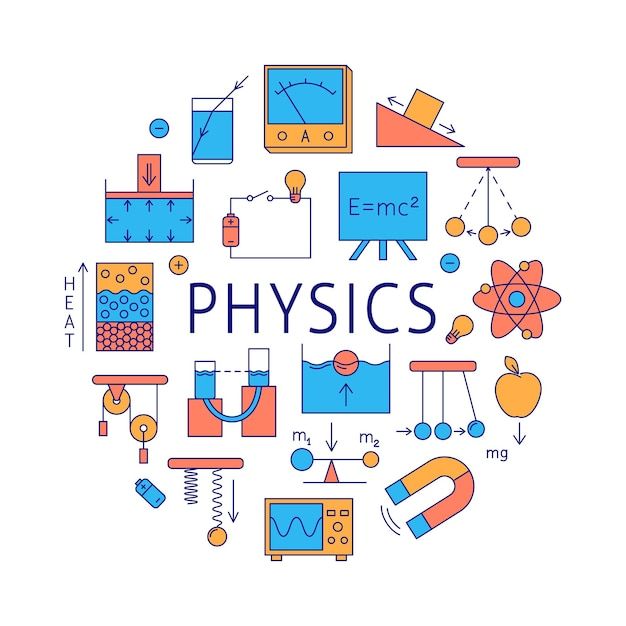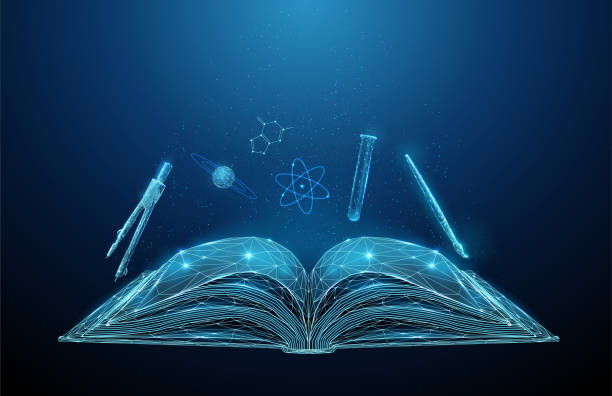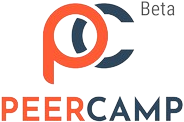Bonding in Chemistry: Simple and Clear
- Intermediate
- 2 hours
- 11-18 Years
-
 Online Classes (1-to-1)
Online Classes (1-to-1)
 INR 400.00 Per Lesson
INR 400.00 Per Lesson

Aviral Shukla
India |
Get to know the exciting world of chemical bonding! In this lesson, we’ll learn how atoms stick together to form important compounds like table salt (sodium chloride). Discover how sodium gives up an electron and chlorine grabs it, creating a strong bond.
Lesson 1: Chemical Bonding intro
- What is chemical bonding, and where is it seen.
Lesson 2: Types of bonds
- Ionic bond and its use cases
Lesson 3: Covalent bonds
- Covalent bonds and their use cases and examples
Lesson 4: Conclusion
- Hydrogen bond and representation of bonding
Join us to see how these connections shape everything around us!
Complete Physics Course for Class 12 with Live Sessions (Full Course)
- All Levels
- 50 hours
- 16-18 Years
-
 Online Classes (Group)
Online Classes (Group)
 INR 6000.00 Monthly
INR 6000.00 Monthly

Venkata Vijaya Kumar Veluri
India |
This Class XII CBSE Physics course offers a comprehensive understanding of all key concepts, integrating theory with practical applications. It prepares students for board exams and competitive exams like JEE, enhancing problem-solving skills and conceptual clarity.
Curriculum Structure
Unit I: Electrostatics
- Electric charges and fields – Electric charges, conservation, Coulomb’s law, force between charges, superposition principle, electric field, field lines, dipole, torque, flux, Gauss’s theorem and its applications.
- Electrostatic potential and capacitance – Potential, equipotential surfaces, potential due to point charge/dipole/system, potential energy, conductors, dielectrics, capacitors, series/parallel combinations, energy in capacitor.
Unit II: Current Electricity
- Electric current, drift velocity, mobility, Ohm’s law, resistivity, conductivity, temperature dependence, internal resistance, emf, combination of cells, Kirchhoff’s laws, Wheatstone bridge, metre bridge, potentiometer.
Unit III: Magnetic Effects of Current and Magnetism
- Moving charges and magnetism – Biot-Savart law, Ampere’s law, force on current-carrying conductor, torque on coil, galvanometer, conversion to voltmeter/ammeter.
- Magnetism and matter – Bar magnet, earth’s magnetism, magnetic elements, dia-, para-, and ferromagnetic substances, hysteresis.
Unit IV: Electromagnetic Induction and Alternating Currents
- Faraday’s law, induced emf, Lenz’s law, eddy currents, self and mutual induction, AC circuits (resistor, inductor, capacitor), reactance, impedance, LC oscillations, resonance, transformer.
Unit V: Electromagnetic Waves
- Need of displacement current, electromagnetic waves and their characteristics, transverse nature, spectrum (radio to gamma rays).
Unit VI: Optics
- Ray optics and optical instruments – Reflection, refraction, total internal reflection, lens formula, magnification, power, microscopes, telescopes.
- Wave optics – Huygens’ principle, interference, Young’s double slit, diffraction (single slit), resolving power, polarization, Brewster’s law.
Unit VII: Dual Nature of Radiation and Matter
- Photoelectric effect, experimental study, Einstein’s equation, matter waves, de Broglie relation, Davisson-Germer experiment.
Unit VIII: Atoms and Nuclei
- Atoms – Rutherford, Bohr model, energy levels, hydrogen spectrum.
- Nuclei – Composition, size, mass-energy relation, binding energy, radioactivity (α, β, γ decay), nuclear fission and fusion.
Unit IX: Electronic Devices
- Semiconductors (intrinsic, extrinsic), p–n junction diode, I–V characteristics, junction diode as rectifier, LED, photodiode, solar cell, Zener diode, transistor characteristics, transistor as amplifier/switch.

Kashish Sharma
India |
Explain what environment means, its components, and how humans modify the environment.
Lesson Name: Environment
- Environment and its components
Exploring Plant Physiology: Understanding the Science of How Plants Function
- All Levels
- 7 hours
- 16-18 Years
-
 Online Classes (1-to-1)
Online Classes (1-to-1)
 INR 1000.00 Per Lesson
INR 1000.00 Per Lesson

Deepti Mudgal
India |
This comprehensive course dives deep into the vital processes that keep plants alive, growing, and adapting. Perfect for biology enthusiasts and students preparing for competitive exams, the lessons are designed to simplify complex topics with clarity and real-life connections.
Curriculum Structure of Plant Physiology
- Transport in Plants
- Means of transport (Diffusion, Facilitated diffusion, Active transport)
- Plant–water relations (Osmosis, Plasmolysis, Water potential)
- Long-distance transport of water (Cohesion-tension theory, Transpiration pull)
- Transpiration and its factors
- Phloem transport (Mass flow hypothesis, source–sink relationship)
- Mineral Nutrition
- Essential minerals: their role in plants
- Deficiency symptoms
- Mechanism of mineral absorption
- Nitrogen metabolism (Biological nitrogen fixation, Nitrogen cycle)
- Photosynthesis in Higher Plants
- Pigments involved in photosynthesis
- Light reaction (Photophosphorylation, Electron transport chain)
- Cyclic and non-cyclic photophosphorylation
- C3, C4, and CAM pathways
- Chemiosmotic hypothesis
- Photorespiration and its significance
- Respiration in Plants
- Glycolysis, Fermentation
- Krebs’ cycle (TCA cycle)
- Electron Transport System (ETS)
- Oxidative phosphorylation
- Energy yield (ATP balance sheet)
- Respiratory quotient (RQ)
- Plant Growth and Development
- Growth and its phases
- Measurement of growth
- Growth regulators (Auxins, Gibberellins, Cytokinins, Abscisic Acid, Ethylene)
- Photoperiodism and Vernalisation
- Seed dormancy and germination
Foundation Physics: Motion, Work, Energy, Power & Measurements
- Expert
- 24 hours
- 11-18 Years
-
 Online Classes (1-to-1)
Online Classes (1-to-1)
 INR 1000.00 Weekly
INR 1000.00 Weekly

Chandan Choudhury
India |
Course Structure
Lesson Name: Motion in a Straight Line, Motion in a Plane, Work, Energy, and Power
- Various parameters used to asses motion
- Equations of motion and graphs
- Vectors
- Projectile
- Equations of a projectile
- Numerical analysis using graphs
- Types of work done
- Types of energy
- Conservation of energy
- Graphical analysis
- Power and pump problems
Foundations of Physics – ICSE Class 6 Made Simple & Fun (Full Course)
- Intermediate
- 16 hours
- 6-15 Years
-
 Online Classes (Group)
Online Classes (Group)
 INR 1000.00 Monthly
INR 1000.00 Monthly

Sanjeev Singh
India |
Welcome to ICSE Class 6 Physics, where science becomes a journey of curiosity and discovery!
This course is designed to introduce young learners to the fascinating world of physical science. From understanding how objects move and interact, to exploring light, electricity, and simple machines, each topic is taught using easy language, visual examples, and fun activities. Whether you're learning at home or in the classroom, this course lays a strong foundation for future science learning and builds critical thinking skills from the ground up.
Course Structure
1. Introduction to Physics
- Definition of Physics
- Importance in daily life
- SI units and measurement tools
2. Physical Quantities and Measurements
- Measurement of length, mass, time, temperature
- Units and instruments
3. Motion and Types of Motion
- Rest and motion
- Types: linear, circular, periodic, rotational
- Distance and displacement
- Speed (concept only)
4. Force
- Definition and effects
- Types: contact, non-contact
- Friction: advantages, disadvantages, control
5. Simple Machines
- Definition and need
- Types: lever, pulley, inclined plane, wheel & axle, wedge, screw
6. Light
- Sources and properties
- Reflection and shadows
- Transparent, translucent, opaque objects
- Pinhole camera
7. Magnetism
- Types and properties of magnets
- Magnetic vs non-magnetic materials
- Magnetic poles and compass
- Uses of magnets
8. Electricity
- Electric cell and circuit
- Conductors and insulators
- Safe use of electricity
- Simple electric activities
Let’s make physics your favorite subject—one concept at a time!
Human Eye and The Colourful World
- All Levels
- 3 hours
- 11-18 Years
-
 Online Classes (1-to-1)
Online Classes (1-to-1)
 INR 1200.00 Monthly
INR 1200.00 Monthly

Ankit Singh
India |
The chapter "The Human Eye and the Colourful World" explains the structure and function of the human eye, which allows us to see the world around us.
It covers important parts like the cornea, iris, pupil, lens, retina, and optic nerve.
The chapter also discusses
- The eye's ability to adjust its focus (accommodation)
- common vision defects (myopia, hypermetropia, and presbyopia)
- and their corrections using lenses.
Inside the Atom (Exploring the Nuclear Model and Its Revolutionary Impact)
- Intermediate
- 3 hours 20 minutes
- 16-18 Years
-
 Online Classes (1-to-1)
Online Classes (1-to-1)
 INR 2500.00 Weekly
INR 2500.00 Weekly

Gul Haider
Pakistan |
Step into the fascinating world of atomic physics with our in-depth exploration of the nuclear model of the atom! In this engaging session, we’ll journey through the historical experiments and scientific breakthroughs that reshaped our understanding of matter. You’ll learn how the groundbreaking work of scientists like Rutherford led to the discovery of the atomic nucleus, replacing earlier models and paving the way for modern nuclear physics.
In this interactive gig, we will:
1) Examine the key experiments (e.g., the gold foil experiment) that challenged the plum pudding model and revealed the nucleus.
2) Break down the structure and forces at play within the atom’s nucleus.
3) Discuss the implications of the nuclear model for both scientific theory and practical applications in fields.
Curriculum Details
Lesson 1: The atom (Scattering experiments)
Lesson 2: Rutherford–Bohr model of the atom
Lesson 3: The nucleus (Protons, neutrons, isotopes and, nuclides)
Lesson 4: Nuclear energy (Nuclear reactor)
Lesson 5: Fission & Fusion
Learn Organic Chemistry Step by Step
- Intermediate
- 1 hour
- 11-18 Years
-
 Online Classes (1-to-1)
Online Classes (1-to-1)
 INR 300.00 Per Lesson
INR 300.00 Per Lesson

Luxmikant Giri
India |
Course Curriculum:
1. Haloalkanes:
- Nomenclature,
- Nature of C–X bond
- Physical and chemical properties
- Optical rotation mechanism of substitution reactions.
2. Haloarenes:
- Nature of C–X bond,
- Substitution reactions (Directive influence of halogen in monosubstituted compounds only).
- Uses and environmental effects of dichloromethane, trichloromethane, tetrachloromethane, iodoform, freons, and DDT.
3. Alcohols:
- Nomenclature
- Methods of preparation
- Physical and chemical properties (of primary alcohols only)
- Identification of primary
- Secondary, and tertiary alcohols
- Mechanism of dehydration
- Uses with special reference to methanol and ethanol
4. Phenols:
- Nomenclature
- Methods of preparation
- Physical and chemical properties
- Acidic nature of phenol
- Electrophilic substitution reactions
- Uses of phenols.
5. Ethers:
- Nomenclature
- Methods of preparation,
- Physical and chemical properties
- Uses
6. Aldehydes and Ketones:
- Nomenclature
- Nature of the carbonyl group
- Methods of preparation
- physical and chemical properties
- Mechanism of nucleophilic addition
- Reactivity of alpha hydrogen in aldehydes
- Uses.
7. Carboxylic Acids:
- Nomenclature
- Acidic nature
- Methods of preparation
- physical and chemical properties
- Uses
8. Amines:
- Nomenclature
- Classification
- Structure
- Methods of preparation
- Physical and chemical properties
- Uses
- Identification of primary
- Secondary and tertiary amines
9. Diazonium salts:
- Preparation
- Chemical reactions
- Importance in synthetic organic chemistry
Light- Reflection and Refraction
- All Levels
- 50 minutes
- 11-18 Years
-
 Online Classes (Group)
Online Classes (Group)
 INR 1200.00 Monthly
INR 1200.00 Monthly

Ankit Singh
India |
Topics to be Covered:
- Reflection of Light
🔹Laws of Reflection
🔹Plane Mirror and its characteristics
🔹Regular and Diffused Reflection - Spherical Mirrors
🔹Concave and Convex Mirrors
🔹Image formation by spherical mirrors
🔹Uses of concave and convex mirrors
🔹Mirror Formula and Magnification - Refraction of Light
🔹Laws of Refraction
🔹Refraction through a glass slab
🔹Refractive Index - Lenses
🔹Convex and Concave Lenses
🔹Image formation by lenses
🔹Lens Formula and Magnification
🔹Power of a Lens
Lessons schedule- Duration of each lesson will be 45- 50 minutes
Time : 7:00 pm-8:00 pm


















 Academics
Academics Tech Skills
Tech Skills Soft Skills
Soft Skills Hobbies & Wellness
Hobbies & Wellness
